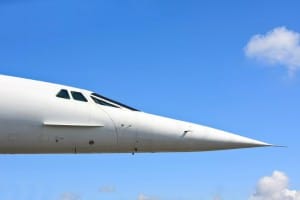Aircraft Maintenance: Improving Safety Ratings for Charter Jets
While air travel is a significantly safer mode of transport than driving according to reports from the National Transportation Safety Board (NTSB), accidents do occur (1). The majority of aviation accidents involve amateur pilots that fly small, private planes in what is known as the general aviation category. However, the accident rate for chartered jet flights that are flown by professional pilots is also slightly higher than the accident rate for commercial flights. For every 100,000 hours of operation, charter jet services had 1.27 accidents; commercial flights had only .155 accidents per 100,000 hours of operation in 2014 (2). Here are industry-backed reasons for the higher rates, some ways that charter jet sector leaders seek to improve the safety of their offerings and a few characteristics of safety-conscious charter jet providers.
Common Causes of Chartered Jet Accidents
The most common cause of charter jet and commercial plane accidents is operator error. However, some airplane accidents also result from mechanical problems and improperly maintained equipment. For example, the 2014 charter jet crash that killed seven people near Bedford, Massachusetts during takeoff was caused by a mix of pilot error and Gulfstream G-IV design flaws.
The investigation that was conducted by the NTSB indicated that the flight crew failed to conduct a critical pre-flight check that would have alerted them to unlock flight control mechanisms prior to takeoff. NTSB also identified the Gulfstream G-IV’s design as a contributing cause of the crash; the high-powered jet’s avionics should have minimally given the pilot an unmistakable alert that the plane’s controls were in the locked position prior to takeoff. Since the plane’s design was certified for public use by the Federal Aviation Administration (FAA), the NTSB passed along some of the blame for the accident to them as well (3).
Even though the causes of the Massachusetts Gulfstream G-IV crash were not related to improperly maintained equipment, plane operators could have identified the plane’s design flaw through routine aircraft maintenance inspections and safety audits. Many charter jet aircraft maintenance shops also conduct upgrades and retrofits for planes, and this type of fix could have been done for the Gulfstream G-IV that crashed near Bedford.
Initiatives for Improving Safety Ratings
Aircraft manufacturers, the NTSB, the FAA and a number of private, professional organizations such as the National Business Aviation Association (NBAA) work together to lower accident rates that relate to corporate flights. The FAA gathers input from the business aviation community and updates certification requirements for planes that are used for private jet services. Third-party organizations like the NBAA also provide updated professional development for those employed in the business aviation sector.
Choosing a Safety-Conscious Charter Jet Provider
Selecting a charter jet service is all about comfort and convenience for most people. However, the recent private jet accidents highlight that all charter jet airlines are not created equally when it comes to aviation safety. Outstanding charter jet service providers exceed the standards set by the FAA. Working with independent audit firms such as WYVERN Consulting, is one way that charter jet service providers can improve the safety of their services and distinguish themselves from competitors. WYVERN does site audits for charter jet providers’ aircraft and crew, and their investigative methods and recommended aircraft operating procedures get measurable results. Other private jet charter companies show that they make aviation safety a high priority by employing qualified aircraft mechanics who conduct safety checks and aircraft maintenance in-house.
Links
1. http://traveltips.usatoday.com/air-travel-safer-car-travel-1581.html
2. http://time.com/2807413/safe-private-jets/
3. http://www.ntsb.gov/investigations/AccidentReports/Pages/AAR1503.aspx
If you are reading this on anything other than The Early Airway it is stolen content. Follow us on Twitter @TheEarlyAirWay. Come and visit our blog at https://theearlyairway.com/.

